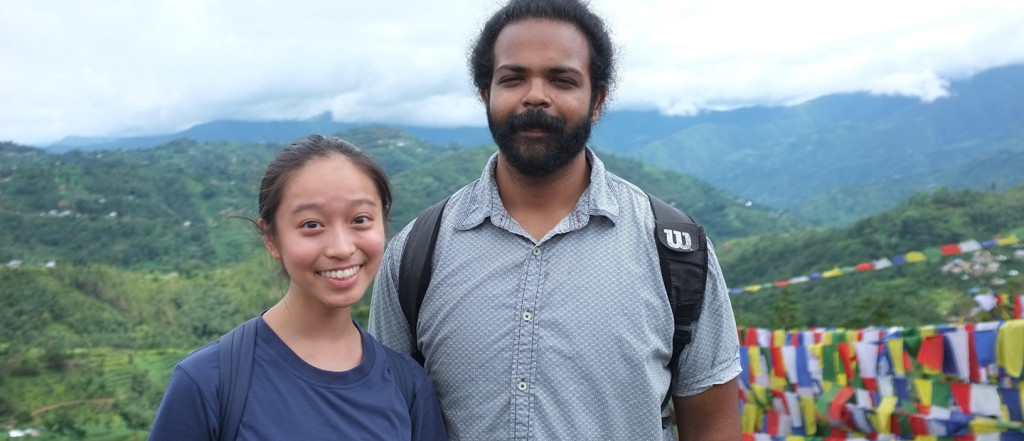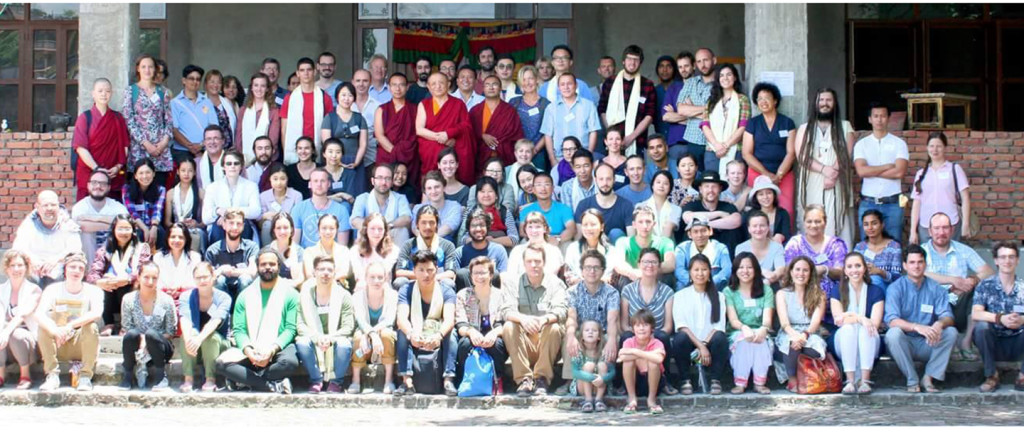Two Yale-NUS students study Sanskrit in Nepal

The language is ancient and not many people use it.
Despite its perceived obscurity, Josh Ragbir and Sherice Ngaserin (Class of 2018) enthusiastically said ‘yes’ to the offer to study Sanskrit in Nepal.
The rising juniors, who are both majoring in Philosophy, are currently attending a summer language programme at the Rangjung Yeshe Institute in the city of Kathmandu, Nepal.
The programme’s costs are offset by the Summer Language Scholarship, of which the two students are recipients. The scholarship, offered by the College’s Centre for International & Professional Experience (CIPE), is worth up to $5,000.
Josh and Sherice had different motivations for learning the language.
Sherice’s curiosity about the Sanskrit language was piqued when she observed that the Common Curriculum texts that she had previously studied were all written in Sanskrit. Knowing the language, therefore, could add to her understanding of the academic material.
Josh, on the other hand, lamented that he realised how “watered down” traditional Hindu education was in his home country of Trinidad and Tobago after taking a philosophy course on Hinduism last semester.
“For seven years, I sang songs and said prayers written in Sanskrit,” he reflected. “But no one attempted to learn the language, much less teach it to me.”
Every weekday at 8 am, the two students attend a traditional Sanskrit class, where they learn spoken Sanskrit. This is then followed by a Sanskrit grammar lesson lasting one or two hours.
Due to the intense nature of the course, time after class is usually spent completing homework in local cafes.
Aside from the heavy academic workload, Sherice admitted that she experienced some minor culture shocks when she first arrived.
“I think the thing that surprised me most at first was that dinner is served pretty late in Nepal,” she said.
“Back in Singapore, I often eat dinner at seven, so I was surprised that Nepali and Tibetan families tend to eat dinner at 9pm or later in the summer. My Ama-la (Tibetan for mother) explained that this is because people often start cooking after it turns dark.”
Josh had an easier time adjusting to the local culture, having already spent a month living in Nepal in December 2015.
However, he shared that he continues to be caught off-guard by the “sheer politeness” of the Nepali people.  The two students have also been actively learning outside the classroom.
The two students have also been actively learning outside the classroom.
During a class expedition, Sherice visited Durbar Marg, a street in Kathmandu, to attempt to decipher the Sanskrit inscriptions on the walls of the Buddhist temples and structures there.
Josh’s love for walking has also led him to the Boudhanath Stupa, the holiest Buddhist stupa outside of Tibet. The stupa, an important form of Buddhist architecture, is usually used for meditation.
He will be volunteering in its reconstruction in the coming weeks, as the building was badly damaged after the 2015 earthquakes.
Ultimately, both Josh and Sherice credit their professors at Yale-NUS for helping to build up their passion for the language.
Sherice pointed out, for example, that there are “many amazing professors” one can approach in the College to read a text in Sanskrit.
Josh concurred: “We have three professors who actively study Sanskrit texts, another incoming professor who actively works with inscriptions and one interested in researching Indo-Roman trade routes.”
“For a school our size, that’s unbelievable.”





